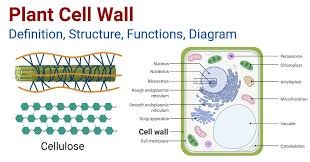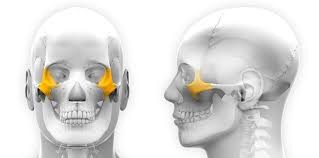What part of a plant cell acts as a barrier and provides support to the cell?
Cell membrane.
Cell wall.
Xylem.
Chloroplast.
Correct Answer : B
The cell wall is the part of a plant cell that acts as a barrier and provides support to the cell. It is a rigid, protective structure located outside the cell membrane and is composed primarily of cellulose, a complex carbohydrate. The cell wall gives plant cells their characteristic shape and provides mechanical support, preventing the cell from bursting due to osmotic pressure. It also helps regulate the movement of water and solutes into and out of the cell and protects the cell from pathogens and mechanical damage. In addition to cellulose, the cell wall may contain other polysaccharides, proteins, and lignin, depending on the type of plant cell and its function.

HESI A2 Exam Quiz Bank
TEAS 7 Exam Quiz Bank
Find More HESI Questions
HESI A2 Questions: We got the latest updated HESI A2 Questions
100% Money Refund: 100% money back guarantee if you take our full
assessment pass with 80% and fail the actual exam.
Live Tutoring: Fully customized live tutoring lessons.
Guaranteed A Grade: All students who use our services pass with 90%
guarantee.
Related Questions
Correct Answer is D
Explanation
The zygomatic arch, also known as the cheekbone or zygoma, is a prominent facial bone that forms part of the structure of the face. A fracture of the zygomatic arch would be located in the facial region. The zygomatic arch extends horizontally from the area near the ear to the region of the cheekbone, contributing to the overall shape and support of the face. Fractures of the zygomatic arch can result from trauma to the face, such as blunt force impact, and may cause pain, swelling, deformity, and difficulty with chewing or facial movement.
Correct Answer is A
Explanation
The mitochondria are often referred to as the powerhouse of the cell because they are the primary site of ATP (adenosine triphosphate) production through aerobic respiration. ATP is the primary energy currency of the cell, providing energy for various cellular processes such as muscle contraction, active transport, biosynthesis, and cell division. Mitochondria contain their own DNA and ribosomes, enabling them to produce some of the proteins required for their function. However, their most critical role is in ATP production through the electron transport chain and oxidative phosphorylation, processes that occur within the inner mitochondrial membrane.
Correct Answer is A
Explanation
The magnification of a standard ocular lens on a light microscope is typically 10X. The ocular lens, also known as the eyepiece, is the lens closest to the observer's eye. It magnifies the image produced by the objective lens, which is the lens closer to the specimen being observed. Together, the ocular lens and the objective lens determine the total magnification of the microscope. The standard ocular lens provides a magnification of 10X, meaning it magnifies the image by a factor of 10 compared to the naked eye.
Correct Answer is A
Explanation
Exocytosis is the process by which materials are released from a cell by fusing vesicles containing the materials with the plasma membrane, causing the vesicle contents to be expelled into the extracellular environment. It is a form of bulk transport that is used by cells to export molecules such as proteins, neurotransmitters, hormones, and waste products. Exocytosis plays essential roles in various cellular functions, including secretion, cell communication, and the removal of cellular waste.
This question was extracted from the actual HESI A2 Exam. Ace your TEAS exam with the actual HESI A2 Exam questions, Start your journey with us today
Visit Naxlex, the Most Trusted HESI Prep Platform With Guaranteed Pass of 90%.
Money back guarantee if you use our service and fail the actual exam. Option of personalised live tutor on your area of weakness.

